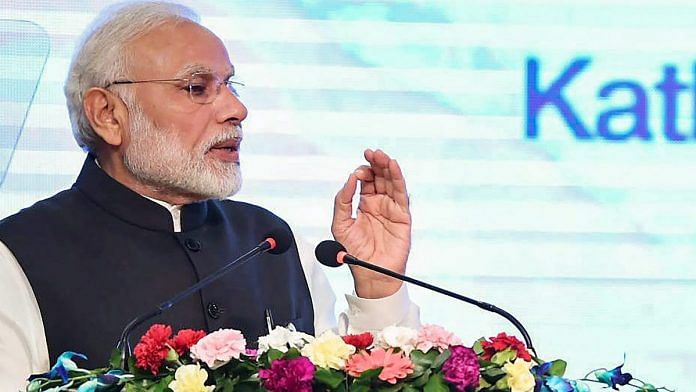Enhancing regional connectivity is today one of India’s top foreign policy priorities, whether with Nepal, Bhutan, Myanmar, Bangladesh or Sri Lanka. Building infrastructure to facilitate trade and enhance connectivity with these countries is a key element of the Neighbourhood First and Act East policies pursued by Prime Minister Narendra Modi’s government, since 2014.
India’s new approach gained importance with China’s new Belt and Road Initiative (BRI), announced in 2014, which focused on infrastructure investments worldwide, including in India’s immediate neighbourhood. India decided not to sign on to the BRI, but barring Bhutan all of its other neighbours did. This naturally increased the pressure on India to perform better and offer alternatives.
The importance of infrastructure in India’s strategy is reflected in the financial effort. Between 2014 to 2018, India’s assistance to six neighbouring countries amounted to over Rs 21,100 crore. Approximately half of this amount was dedicated towards infrastructure projects.
Our analysis of India’s investment in key infrastructure projects in Bangladesh, Bhutan, Nepal, and Myanmar reveals two trends for 2014-15. First, 86 per cent of the development outlay was allocated specifically to infrastructure projects (Figure 1). Second, 73 per cent of total outlay allocated to Nepal was for infrastructure projects (Figure 2).
Figure 1: Share of Infrastructure in India’s Assistance to Bangladesh, Bhutan, Myanmar, Nepal (2014-15)
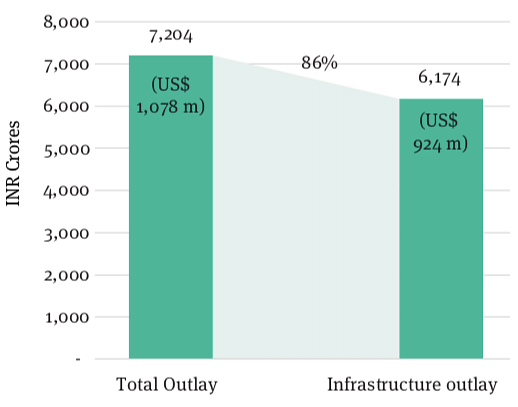
Figure 2: Share of Infrastructure in India’s Assistance to Nepal (2014-15)
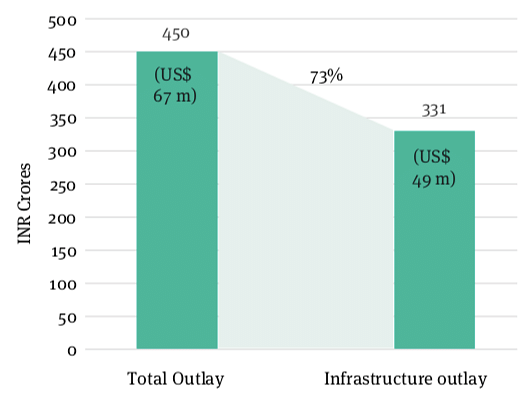
Also read: India-Nepal meet ‘soon’ to discuss all bilateral issues, but Kalapani talks will have to wait
When land comes in the way
India sees itself as a contributor to global infrastructure but its capacity to deliver has been plagued by a history of long-term delays and other challenges, adding to costs and affecting India’s reputation.
In the particular case of Nepal, Indian officials often underline the lack of political investment from the host government. But one cannot reduce infrastructure delays only to Nepal’s volatile or even hostile political intent. Beyond the macro-strategic, political, and security context, it is the unimpeded access to land that poses one of the most significant causes for delays in India-financed infrastructure projects.
The process of acquiring land by the government is complex, especially if foreign or private actors are involved. In South Asia, Indian projects are particularly sensitive, prone to political agendas and consequent opposition.
Also read: India wants to be Vishwa Guru but IFS gets too few diplomats to take us there
Land acquisition: Nepali and Indian gaps
Since the 1950s, successive Nepali and Indian governments have been unable to work out an efficient model to deal with land acquisition in Nepal. Why have issues relating to land acquisition become such a persistent challenge? Two broad reasons stand out. On the Nepali side, the archaic legal framework regulating land and property rights, including compensation and resettlement. On the Indian side, an archaic development cooperation system that lacks technical clauses, expert assessment and standards to mitigate the high risks relating to land acquisition abroad.
Together, these two reasons help explain why India- financed infrastructure projects in Nepal have a greater propensity to get delayed than similar projects supported by Japan, the United Kingdom or multilateral organisations such as the World Bank or the Asian Development Bank.
Also read: Modi’s Neighbourhood First push is being pulled down by decades of policy stagnation
Case study: Postal Road (Hulaki Rajmarg)
The Postal Road, or Hulaki Rajmarg, runs across the Terai region of Nepal. The total length of the road is 1,792 km. It is the lifeline of the Terai-Madhes region. The project dates back to 1991, when Indian Prime Minister Chandra Shekhar visited Kathmandu, Janakpur and Biratnagar and gave an assurance that India would support the renovation of the Postal Road in 20 Terai districts.
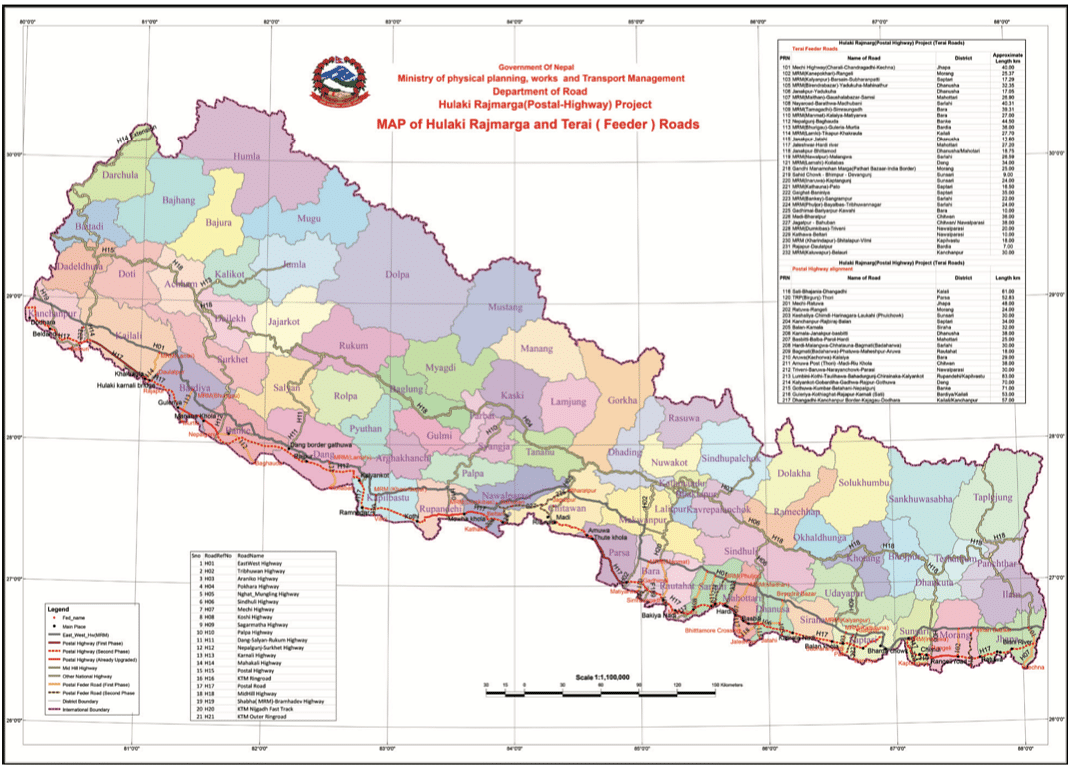
The project was revived in the 2000s because it “fitted well” into New Delhi’s larger connectivity plans between India and Nepal. Between 2009 and 2016, the MEA spent approximately Rs 227 crore. The year 2014-15 saw the highest peak in expenditure, at Rs 117 crore (Figure 3). Additionally, the gap between the outlay and expenditure for the project has been significantly high (Figure 4), highlighting issues in implementation delays or release of funds by the MEA.
Figure 3: Indian Expenditure for Postal Road project (2009-16, INR crore)
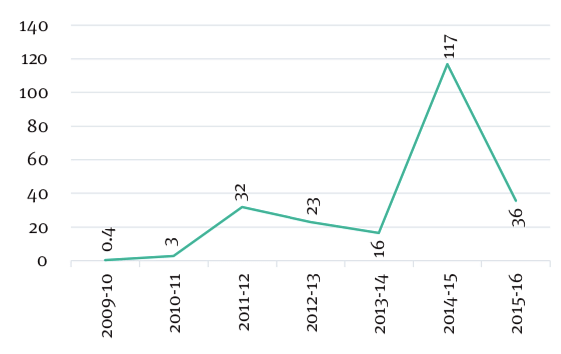
Figure 4: Postal Road Project Outlay and Expenditure by India (2009-15)
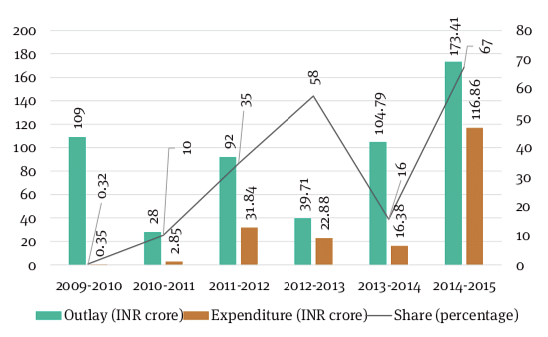
Land-related issues in the project
- Unavailability of land: Despite the provision for 90 per cent land availability in the 2016 MoU, less than 50 per cent of the land was made available by GoN during the tendering process.52 This affected the process of widening of the road width from 7m to 15m, as the adjacent land had to be acquired.
- Encumbrance on the roads: The land made available by GoN was not encumbrance free, with the existence of a few electric poles, water pipelines and trees on the carriageway at some stretches.
- DPR’s land alignment led to delays in land acquisition: At some chainages, canals are flowing from the middle of the road, whereas at others it is located at an intermediate location.
Also read: Kathmandu crossed red lines. India-Nepal relations are entering a deep freeze
Case study: Jogbani-Biratnagar railway link
The Jogbani (India) – Biratnagar (Nepal) railway link is being implemented with the technical and financial assistance of India and is monitored by a Project Steering Committee headed by the Joint Secretary DPA-3, MEA (India) and the Joint Secretary, Ministry of Physical Infrastructure and Transport (Nepal).
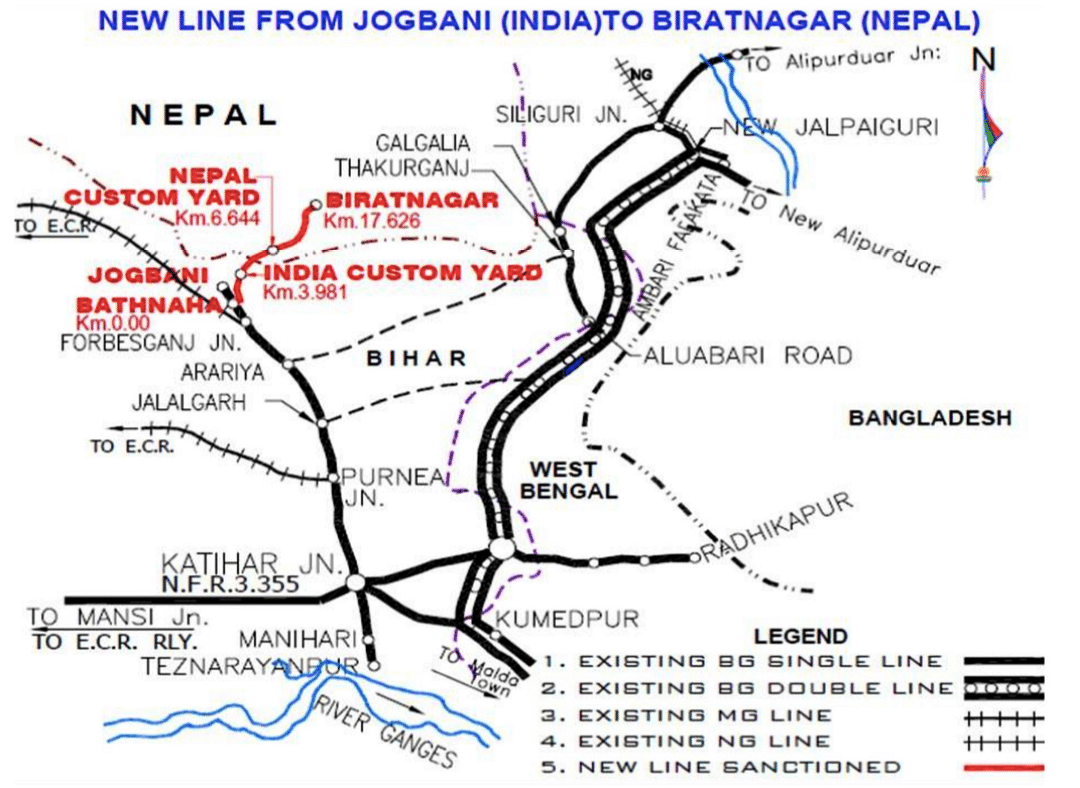
The estimated cost of this railway project was NPR 3.2 billion (approx. $27 million). The total length of the railway line is approximately 18.6 km with 5.5 Km in India (Bathnaha, Bihar) and 13.2 Km in Nepal (up to Katahari, Morang).
Land related issues in the project
- Time delays: The initial land acquisition process took eight years to complete from the border to Biratnagar railway station, between 2011-2019. Land acquisition for further extension of the railway line was pending in patches up to Katahari, Morang.
- Compensation: At the Biratnagar railway station, people went to the Supreme Court of Nepal for an increase in compensation and the verdict was delivered after three years in favour of the project affected families.
- Lack of standardisation in land price compensation: The price of land along/adjacent to rail and road projects escalates differently. As a result, landowners are invariably hesitant in giving up their land unless they are paid a higher compensation.
- Compensation process: The land acquisition process has also highlighted corruption in the compensation process. For example, local politicians were allegedly compensated at a higher rate than the rest of the land-owners, particularly those with land along the Postal highway-railway line intersection (near Rangreli, Morang).
- Limited representation: Local landholders are not part of the Compensation Determination Committee. As a result, there is no transparency in determination of compensation for different landholders. This also reflects the unsystematic land valuation system in Nepal.
Also read: Time for Modi govt to mean business with BIMSTEC. Regional cooperation can’t wait for Pakistan
Policy recommendations for India
- As the nodal agency in these infrastructure projects, the MEA’s DPA should develop clear guidelines and standards for land acquisition processes abroad. The 2015 Ministry of Finance note “Guidelines on Lines of Credit” is a step in the right direction but needs to be detailed out. The DPA should develop clear quality benchmarks to assess how these two commitments can be independently verified. In collaboration with the host government, this may also require working with third-party consultants to verify public records and conditions on the ground.
- To ensure it has updated, in-house knowledge, the MEA’s DPA may commission expert studies on the property rights governance frameworks in Nepal and partner countries.
- The comparative assessment of best practices by the Asian Development Bank (ADB) and Asian Infrastructure Investment Bank (AIIB), shows how adopting detailed Environmental and Social Impact Assessment framework can facilitate the land acquisition process. This supports rehabilitation of the project affected people, thereby reducing land-related conflicts between the host government and landowners.
- Encourage joint partnerships in preparation of DPRs. These should be prepared by Indian experts working in tandem with recipient country’s consultants.
- Inter-ministerial cooperation in capacity building: To achieve this, there is need for sensitisation and capacity building within the MEA through coordination with the Department of Land Resources and Ministry of Rural Development.
- India’s DPA-MEA would benefit from greater dialogue and exchanges with its national and multilateral counterpart organisations.
- While India will have to be cautious not to interfere in the internal land acquisition processes, it can implement regular, high-level bilateral monitoring mechanisms between its diplomatic representative and local counterpart.
Also read: To view developments in the neighbourhood simply as ‘pro-China’ or ‘pro-India’ is myopic
Conclusion
India’s Development Partnership Administration (DPA), created only in 2012 as a part of the Ministry of External Affairs, will have to develop similar guidelines to mitigate risks in land acquisition affecting its projects abroad. At the same time, the DPA must also push for development cooperation partnerships that allow for India and partner countries to exchange best practices on land acquisition.
The DPA has, so far, had a hands-off approach to land rights or land acquisition in foreign countries, despite it being one of the major causes of delay in completion of infrastructure projects. Globally, as more multilaterals and private enterprises look at land rights, it is important that the Indian government realises that land needs to be brought to the centre of development policy discussions.
This is an edited excerpt from the authors’ Brookings India paper When Land Comes in the Way: India’s Connectivity Infrastructure in Nepal. Read the full paper here.
Constantino Xavier is a Fellow in Foreign Policy and Security Studies at Brookings India in New Delhi and the Brookings Institution in Washington DC. Riya Sinha is Research Associate at Brookings India. Views are personal.


